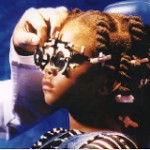Heading back to school often means loading up on supplies, new clothes, and a physical exam to ensure immunizations are all up-to-date. It’s also an optimal time to add in a trip to the eye doctor for your child’s annual exam (Schedule an appointment here). Given that an estimated 80 percent of learning is visual, it’s important for your child’s academic development to make sure that they’re seeing things as they should.
While most elementary schools in the United States and pediatricians’ offices provide vision screening, which may help to detect vision problems, nothing beats an actual visit to an optometrist or ophthalmologist for an eye exam.
Types of Vision Problems:
- Amblyopia: The medical term used when the vision in one of the eyes is reduced because the eye and the brain are not working together properly. The eye itself looks normal, but it is not being used normally because the brain is favoring the other eye. This condition is also sometimes called lazy eye.
- Strabismus: This condition is a misalignment of the eyes. When the eyes point inward, it is commonly referred to as “crossed-eyed” and when they point outward, it is commonly called “wall-eyed”. This can happen with one or both eyes.
- Refractive Errors: These include nearsightedness (myopia), farsightedness (hyperopia), and astigmatism.
- Color blindness: An inherited condition that affects the way your eyes distinguishes certain colors.
Early Signs of Vision Problems:
While the above conditions are best detected by your eye doctor, here are some signs of vision problems parents, teachers, and caregivers can look for in children:
- Frequent eye rubbing
- Squinting
- Tilting the head to look at objects
Many vision problems can be corrected if caught early! So book your back-to-school eye exam today!


